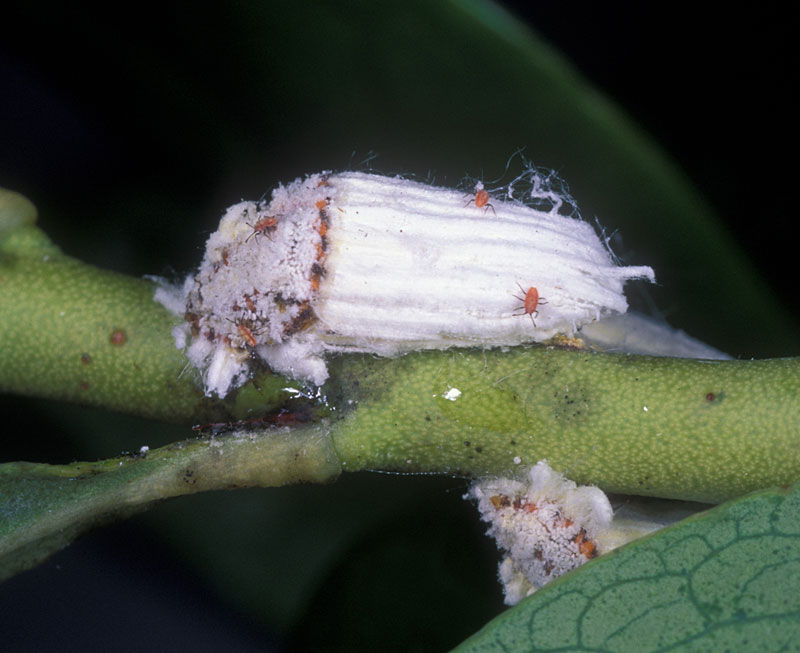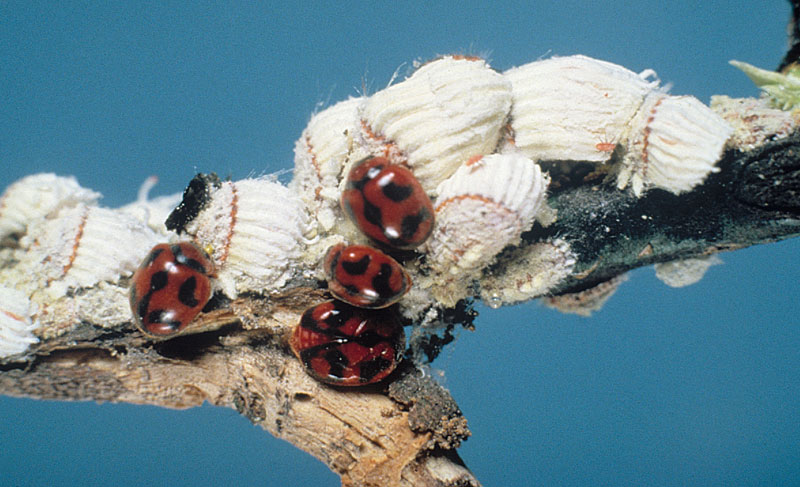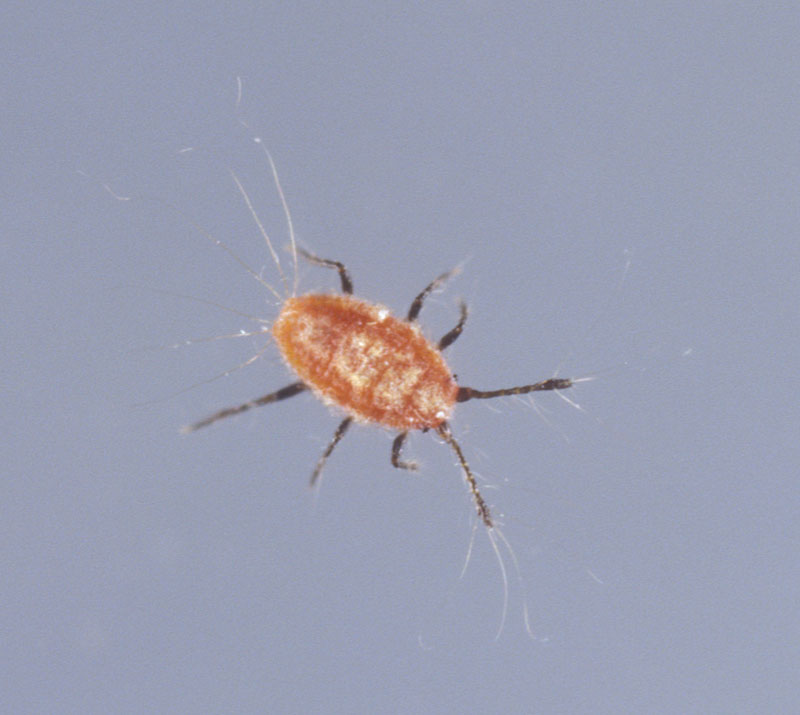Cottony Cushion Scale
|
adult female with crawlers; Photo by Lyle Buss, University of Florida |
|
adults with vedalia beetle, Rodalia cardinalis, predators; Photo courtesy of FDACS-DPI |
|
crawler; Photo by Lyle Buss, University of Florida |
|
crawler; Photo by Lyle Buss, University of Florida |
Scientific name
Icerya purchasi Maskell
Family
Monophlebidae
Description
Mature female (actually hermaphrodite) cottony cushion scales are large for scale insects, usually around 5 mm long. Their bodies are bright orange-red, yellow, or brown, but are usually partially or entirely covered with yellowish or white wax. Possibly the most conspicuous feature is the fluted egg sac they secrete that may be 2 to 2.5 times longer than the body. The ovisac usually contains about 1000 bright red eggs. As the egg sac grows, it pushes the insect's abdomen upward until it looks like the insect is standing on its head. The first stage, or crawler stage, is very small, bright red in color, with conspicuously dark legs and antennae. Males are rarely observed, but are winged with dark red body and dark antennae. Females are always hermaphrodites.
Distribution
Worldwide
Hosts
Palms: infrequently found on palms, but have been found on king palms (Archontophoenix cunninghamiana) and parlor palms (Chamaedorea elegans)
Other: can infest a wide variety of plants, but is commonly found on Citrus and Pittosporum
May be confused with
Adult female cottony cushion scales have similarly structured ovisacs to citrus orthezia scale, but lack the ornate plates on the dorsal aspect of the insect found in citrus orthezia.
Additional comments
Cottony cushion scales excrete honeydewhoneydew:
the sticky, sweet secretion produced by sap-feeding bugs
, so are frequently accompanied by sooty mold and ants.






